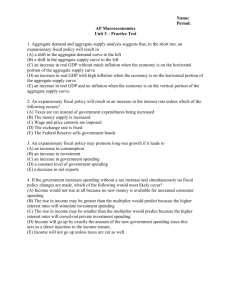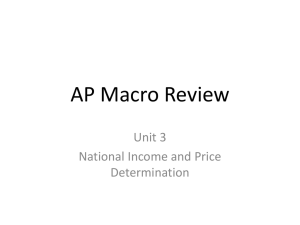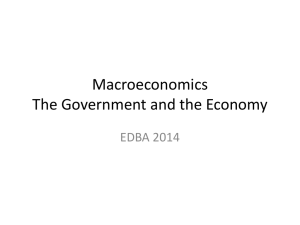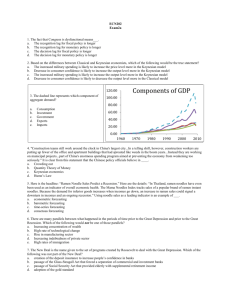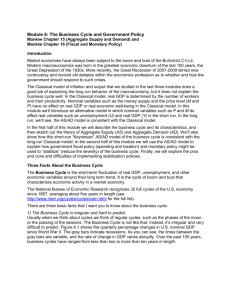Discretionary fiscal policy refers to: A. any change in government
advertisement
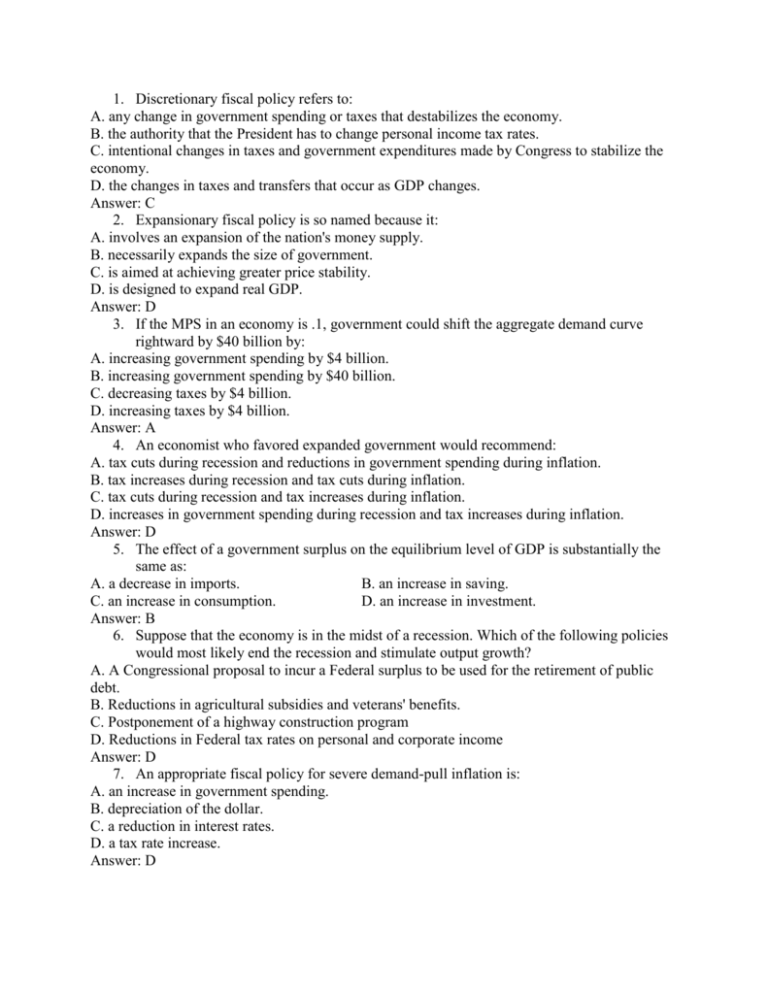
1. Discretionary fiscal policy refers to: A. any change in government spending or taxes that destabilizes the economy. B. the authority that the President has to change personal income tax rates. C. intentional changes in taxes and government expenditures made by Congress to stabilize the economy. D. the changes in taxes and transfers that occur as GDP changes. Answer: C 2. Expansionary fiscal policy is so named because it: A. involves an expansion of the nation's money supply. B. necessarily expands the size of government. C. is aimed at achieving greater price stability. D. is designed to expand real GDP. Answer: D 3. If the MPS in an economy is .1, government could shift the aggregate demand curve rightward by $40 billion by: A. increasing government spending by $4 billion. B. increasing government spending by $40 billion. C. decreasing taxes by $4 billion. D. increasing taxes by $4 billion. Answer: A 4. An economist who favored expanded government would recommend: A. tax cuts during recession and reductions in government spending during inflation. B. tax increases during recession and tax cuts during inflation. C. tax cuts during recession and tax increases during inflation. D. increases in government spending during recession and tax increases during inflation. Answer: D 5. The effect of a government surplus on the equilibrium level of GDP is substantially the same as: A. a decrease in imports. B. an increase in saving. C. an increase in consumption. D. an increase in investment. Answer: B 6. Suppose that the economy is in the midst of a recession. Which of the following policies would most likely end the recession and stimulate output growth? A. A Congressional proposal to incur a Federal surplus to be used for the retirement of public debt. B. Reductions in agricultural subsidies and veterans' benefits. C. Postponement of a highway construction program D. Reductions in Federal tax rates on personal and corporate income Answer: D 7. An appropriate fiscal policy for severe demand-pull inflation is: A. an increase in government spending. B. depreciation of the dollar. C. a reduction in interest rates. D. a tax rate increase. Answer: D 8. An expansionary fiscal policy is shown as a: A. rightward shift in the economy's aggregate demand curve. B. movement along an existing aggregate demand curve. C. leftward shift in the economy's aggregate supply curve. D. leftward shift in the economy's aggregate demand curve. Answer: A 9. Refer to the above diagram, in which Qf is the full-employment output. If aggregate demand curve AD2 describes the current situation, appropriate fiscal policy would be to: A. do nothing since the economy appears to be achieving full-employment real output. B. increase taxes and reduce government spending to shift the aggregate demand curve rightward from AD2 to AD3. C. increase taxes on businesses to shift the aggregate supply curve rightward to reduce the price level. D. reduce taxes and increase government spending to shift the aggregate demand curve from AD2 to AD1. Answer: A 10. Refer to the above diagram, in which Qf is the full-employment output. The shift of the aggregate demand curve from AD3 to AD2 is consistent with: A. an expansionary fiscal policy. B. a major recession. C. a contractionary fiscal policy. D. demand-pull inflation. Answer: C 11. Refer to the above diagram, in which Qf is the full-employment output. The shift of the aggregate demand curve from AD1 to AD2 is consistent with: A. an expansionary fiscal policy. B. a major recession. C. a contractionary fiscal policy. D. severe demand-pull inflation. Answer: A 12. Refer to the above diagram, in which Qf is the full-employment output. The shift in the aggregate demand curve from AD3 to AD2 could result from which of the following fiscal policy actions? A. a tax reduction B. a tax reduction accompanied by an even larger reduction in government spending C. a tax increase accompanied by an even larger increase in government spending D. an increase in government spending Answer: B


